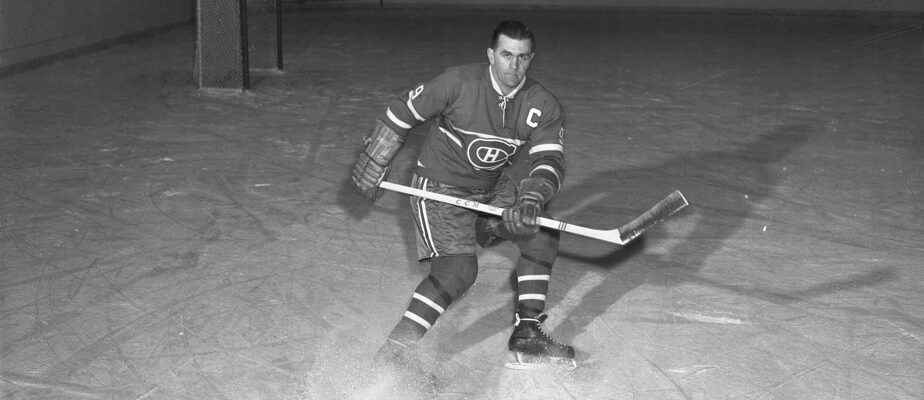Here is our latest batch of answers to your questions. For the next questions, it’s here:
What is that ?
Watching hockey, I notice players breathing something into a container at the start of games. For what ? What is it about ?
Louisa
Response from Simon-Olivier Lorange
These are fragrant salts, composed in particular of ammonia, whose very powerful smell irritates the nasal passages and instantly creates an acceleration of breathing and, consequently, oxygenation of the brain, creating a feeling of renewed energy. energy – the actual effect on performance, however, is not recognized by science. These salts, in a non-sporting setting, can be used in particular to wake up someone who has lost consciousness. Various scientific sites speak of a kind of “reboot” of the brain and warn of certain undesirable side effects. The use of these salts is also not recommended for young people. In 2019, in an article by Quebec newspaperthe director of the doping control laboratory at the INRS-Institut Armand-Frappier, Christiane Ayotte, had argued that even if athletes can use these substances legally, “that does not mean that it is not without- genius “.
Compare eras
On the subject of records in the NHL, how can we compare the times, when the number of games per season was completely different?
Jean-Francois Pigeon
Response from Simon-Olivier Lorange
The seasons increased to 70 games per team in 1949-1950, then gradually from 70 to 80 after the expansion of 1967. It has therefore been over 70 years that the number of games has been appreciable, so that we can approach certain records in absolute value without problem – the most number of points, goals, shutouts, etc. For some records, we will even take the trouble to circumscribe them further in order to make the comparisons more credible. We will therefore begin our comparisons in 1967, the merger with the AMH in 1979, the lockouts of 1994-1995 or 2012-2013, etc. The comparison between eras is more difficult qualitatively. Was Maurice Richard a better player than Wayne Gretzky? Or Jacques Plante, a better goalkeeper than Martin Brodeur? We will then try to create reference points, in relation to the level of domination of a player at his time. With rare exceptions, it mainly leads to debates without a clear outcome.
But where is the assistant guardian?

PHOTO FRANÇOIS ROY, LA PRESSE ARCHIVES
Samuel Montembeault
Hello, how come the visiting team’s substitute goaltender isn’t sitting with his teammates at the Bell Centre?
Bernard Tremblay
Response from Guillaume Lefrancois
In fact, everything depends on the configuration of the arenas. At the Bell Centre, the visiting team’s locker room is located on the opposite side of the players’ bench. The visiting team therefore only has the players’ bench as a space, while the Canadiens’ players also have the corridor leading to their locker room. But in other arenas, the corridor giving access to the locker room overlooks the bench, which ensures that the substitute goalkeeper will have space.
According to Samuel Montembeault, who is beginning to make the rounds of arenas after two full-time years on the circuit, “in most arenas, [le substitut] sits with the players, just behind the bench. It is also this configuration that he prefers, even if he assures that his experience as a visitor auxiliary goaltender at the Bell Center had gone well, when he played for the Panthers. “People spoke to me, I was just happy to hear French,” he recalls. But I prefer to be on the bench, because you can talk to the guys. Otherwise, the supporters are on your back. Last year in Winnipeg, I was on the other side and on top of that, I got kicked out during the game. I was already angry and on top of that, I was being yelled at! »
Umbrella training
Could someone tell me when was the “shotgun training [parapluie en français, je crois] “, where the quarterback moves away a little from his center player? Who was the first passer to use it? And what team did he play for?
Gaston Package
Response from Simon Drouin
The umbrella formation was first used in professional football by the San Francisco 49ers on November 27, 1960 in a game against the Baltimore Colts. Head coach Red Hickey had recycled an old strategy employed at Stanford University some 30 years earlier. The goal was to reduce the effectiveness of pass pressure from the dreaded Colts. The 49ers, who were struggling at the time, caused the upset by winning 30-22. Bob Waters, third quarterback for the California team, was the first conductor of this clever formation which also proved useful for the race. The 49ers have won three of their last four meetings with this tactic with John Brodie as the starting center. It has been credited with “activating the shotgun trigger”. After its inaugural success, the umbrella roster was dropped by the 49ers the following season after a correction suffered against the Chicago Bears, whose line had adjusted. Tom Landry and the Dallas Cowboys revived a team a few years later that is widely used in the NFL today.
Source: Pro Football Hall of Fame
